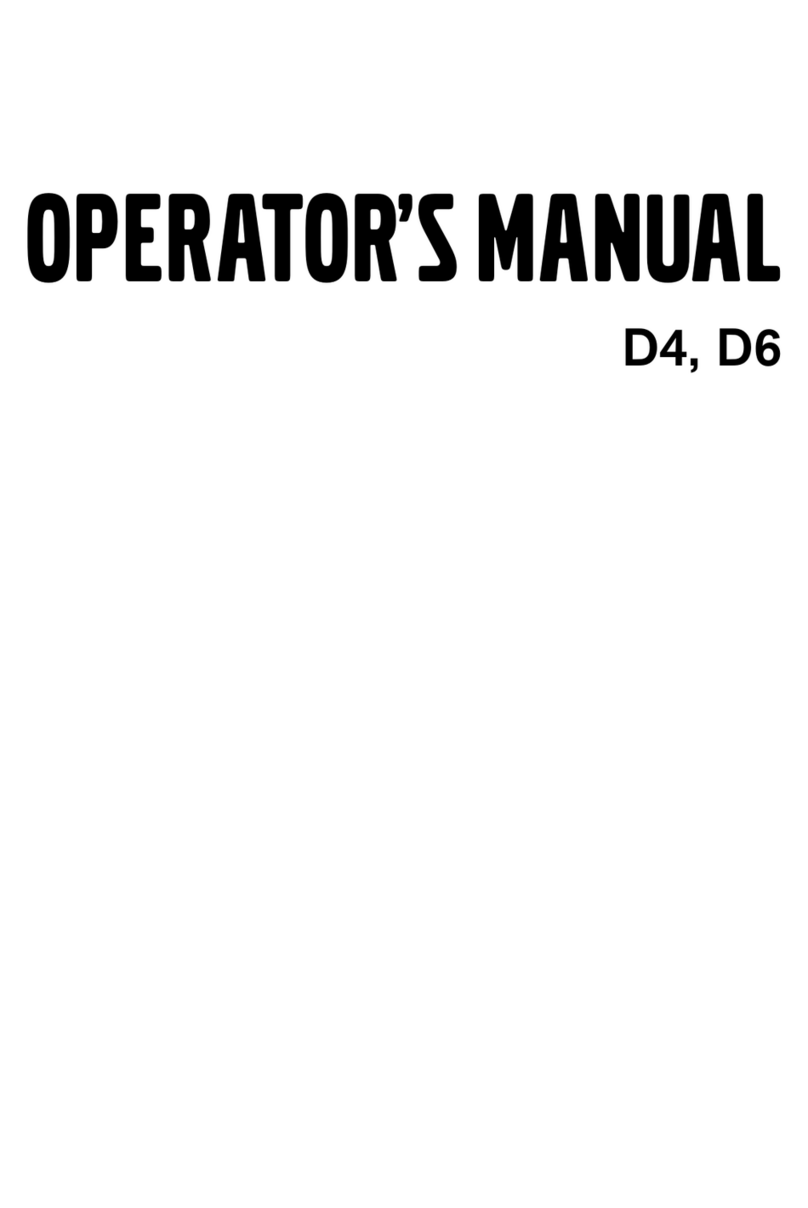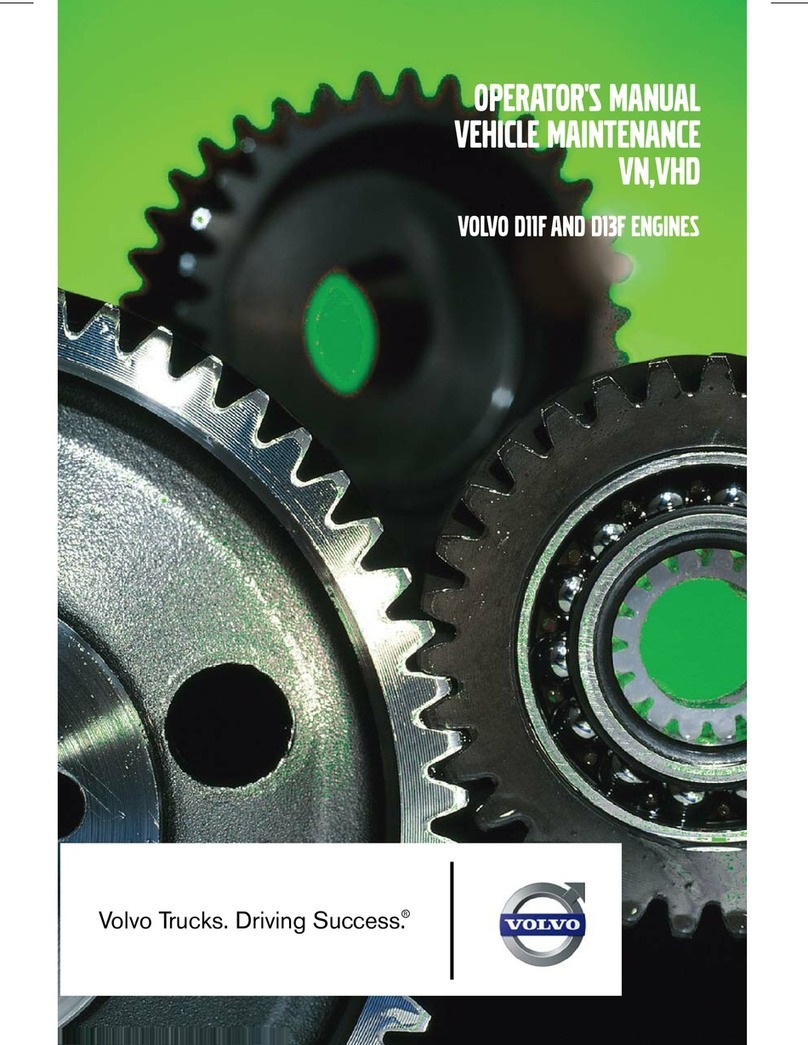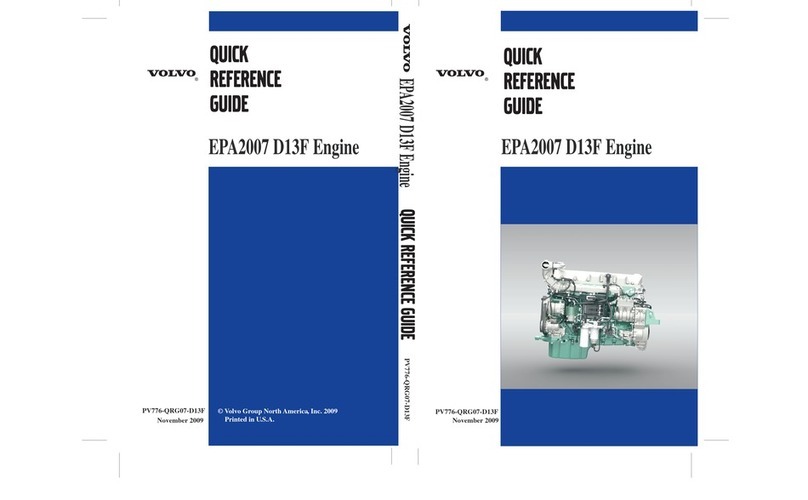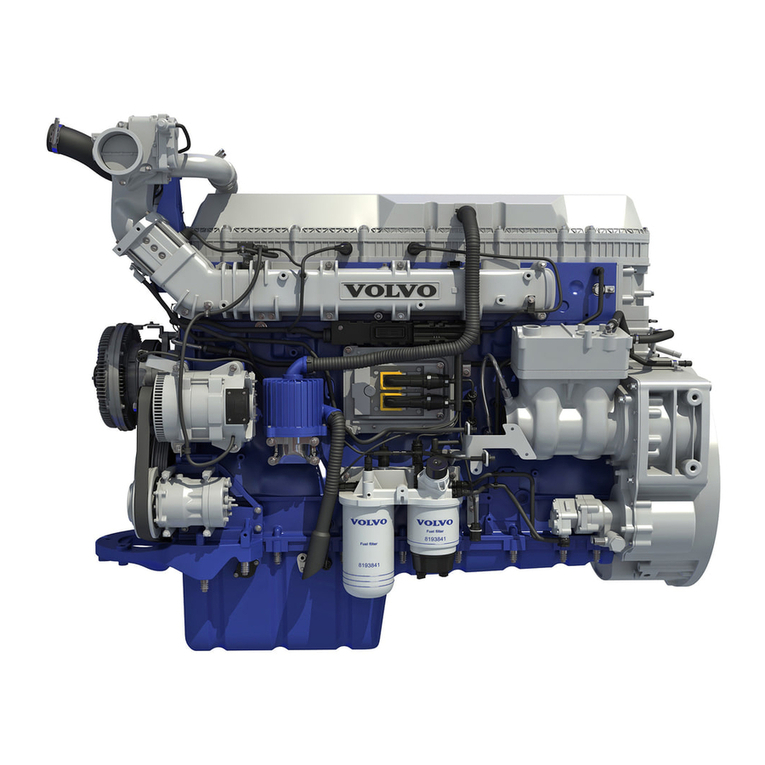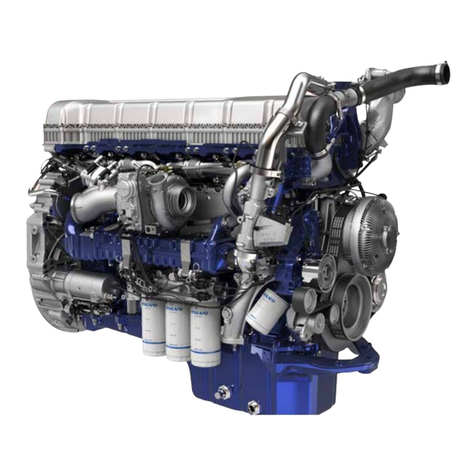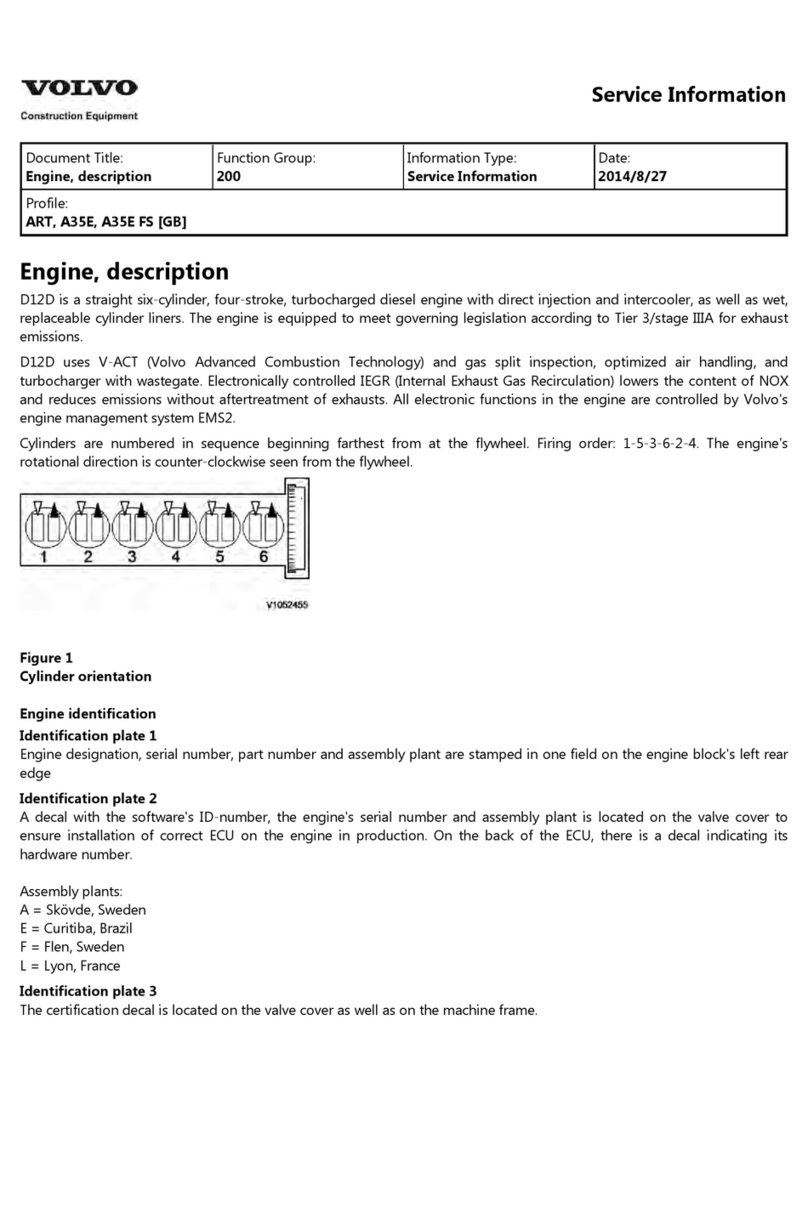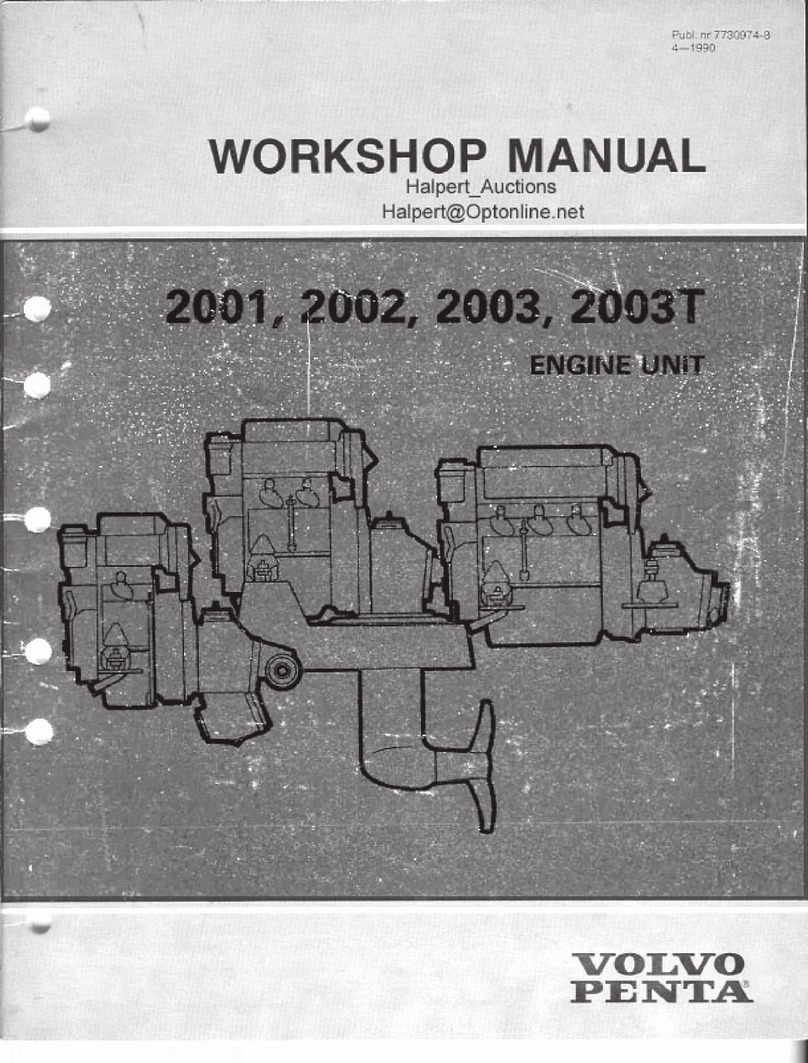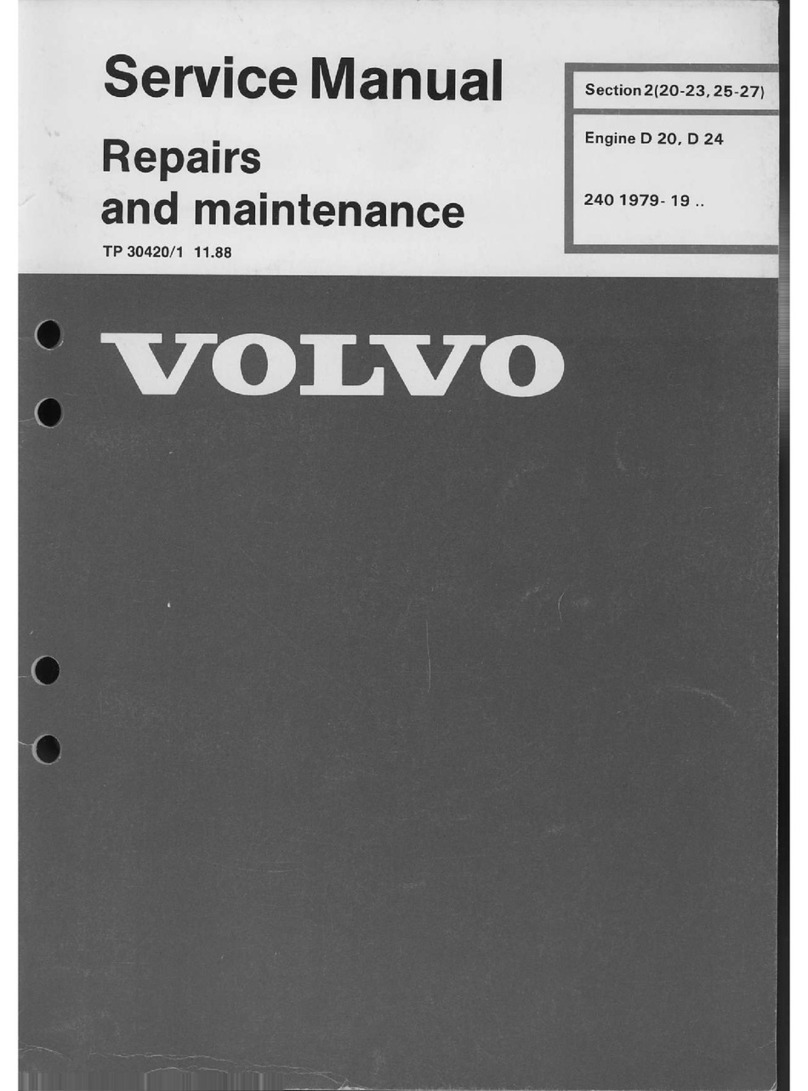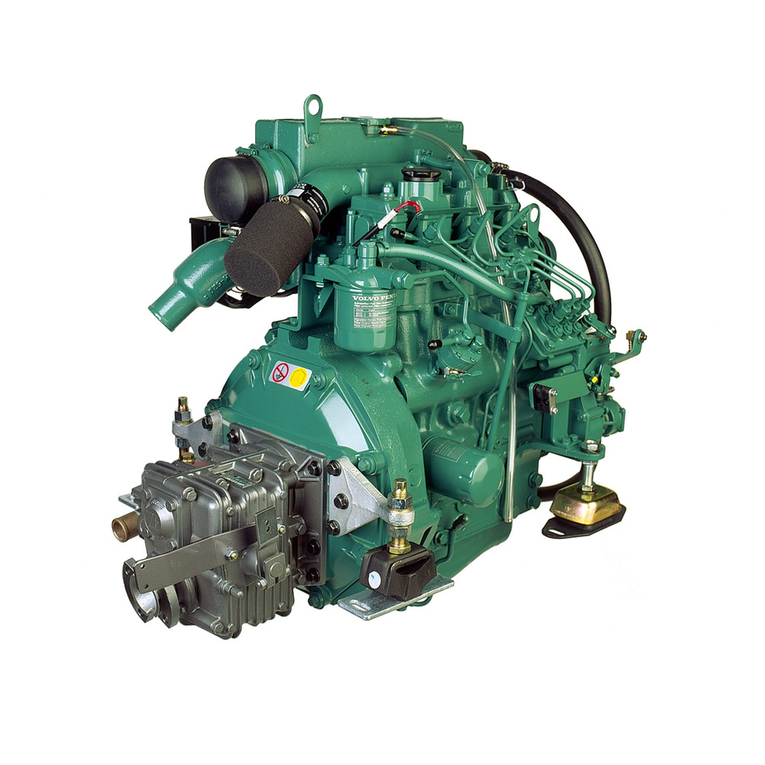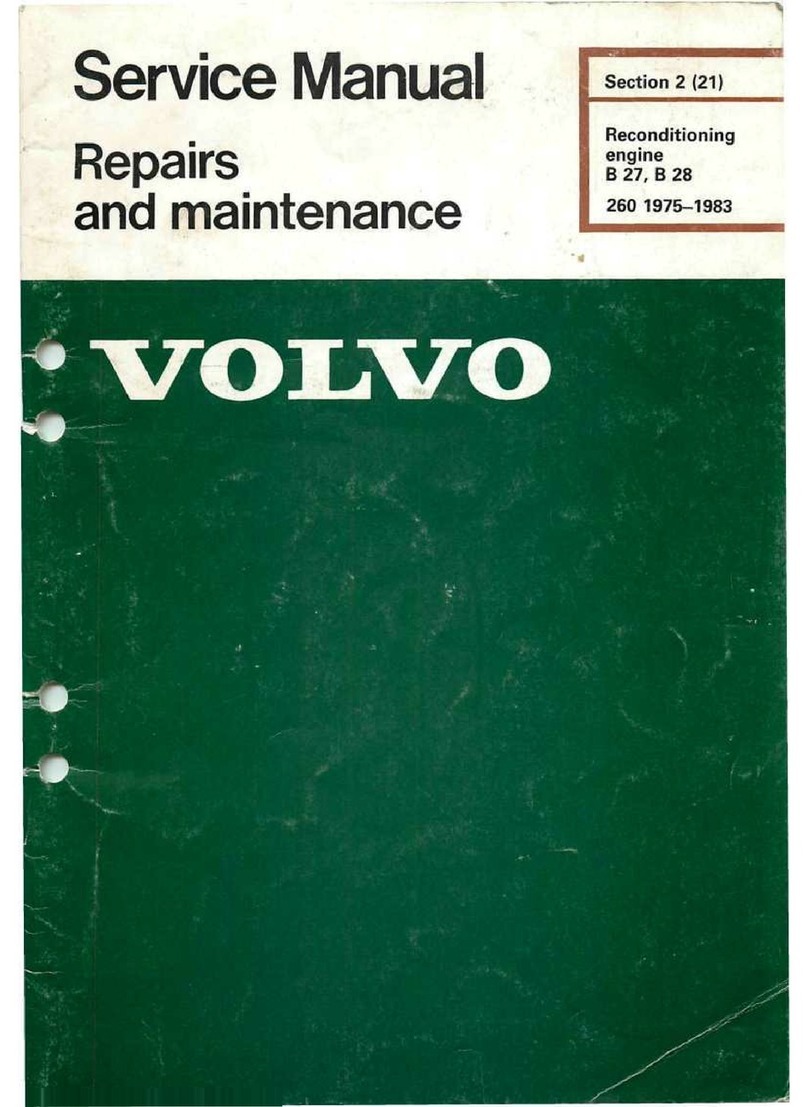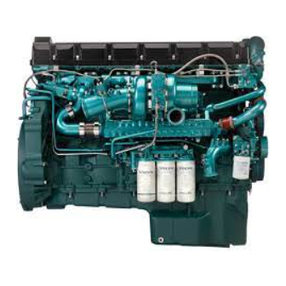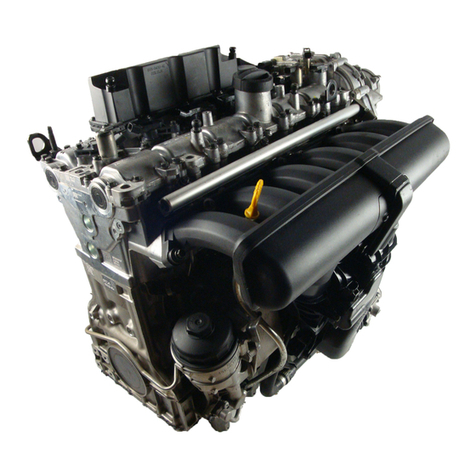6
Introduction
This instruction book has been prepared to give you the greatest possible benefit from your Volvo Penta industrial
engine. It contains the information you need to be able to operate and maintain the engine in a safe and propper
manner. Read the instruction book carefully and learn how to operate the engine, controls and other equipment in
a safe manner before you start the engine.
Environmental care
All of us want to live in a clean, healthy environment,
where we can breathe clean air, see healthy trees,
have clean water in lakes and seas, and be able to
enjoy sunshine without fearing for our health. Unfortu-
nately, this cannot be taken for granted these days; it
is something all of us must work toward.
As an engine manufacturer, Volvo Penta has particular
responsibility and for this reason, environmental care is
an obvious foundation of our product development. Vol-
vo Penta currently has a broad range of engines where
great progress has been made in the reduction of em-
misions, fuel-consumption and engine noise etc.
We hope that you will take care to maintain these
qualities. Always follow the directions in the instruc-
tion book regarding fuel grades, operation and mainte-
nance, to avoid unnecessary environmental impact.
Please contact your Volvo Penta dealer if you notice
any changes such as increased fuel consumption or
increased exhaust smoke.
Always remember to hand in hazardous waste such
as drained oil, coolant, old batteries etc. for disposal
at a recycling facility.
Through our common efforts, we can together make a
valuable contribution to the environment.
Running in
The engine must be “run in” during its first 10
running hours, in accordance with the following:
Use the engine in normal operation. Full load should
only be applied for short periods. Never run the engine
at constant revolutions for prolonged periods during
running in.
Higher oil consumption is normal during the first 100-
200 hours of operation. For this reason, check the oil
level more frequently than the normal reccomendation.
When an disengageable clutch is installed, this should
be checked more carefully during the first days. Ad-
justments may need to be done to compensate bed-
ding-in of the friction plates.
Fuel and Oils
Only use the grades of fuels and oils recommended in
the instruction book (refer to the “Maintenance” chapter
under the fuel and lubrication system headings). Other
grades of fuel and oils can cause malfunctions, increased
fuel consumption and over time even shorten the life of
the engine.
Always change the oil, oil filter and fuel filter according
to the prescribed intervals.
Maintenance and Spare Parts
Volvo Penta engines are designed for maximum reli-
ability and long life. They are built to withstand a de-
manding environment, but also to have the smallest
possible environmental impact. Regular maintenance
and the use of Volvo Penta original spare parts will
ensure these qualities are retained.
Volvo Penta has a world-wide network of authorized
dealers. They are Volvo Penta product specialists,
and have the accessories, original spares, test equip-
ment and special tools necessary for high quality ser-
vice and repair work.
Always comply with the maintenance schedule in
the instruction book, and remember to note the
engine/transmission identification number when
you order service and spare parts.
IMPORTANT! This instruction book describes the engine and equipment as offered for sale by Volvo Penta.
Variations in appearance and function of the controls and instruments may occur in certain variants. In these
cases, refer to the operator’s manual for the relevant application.
